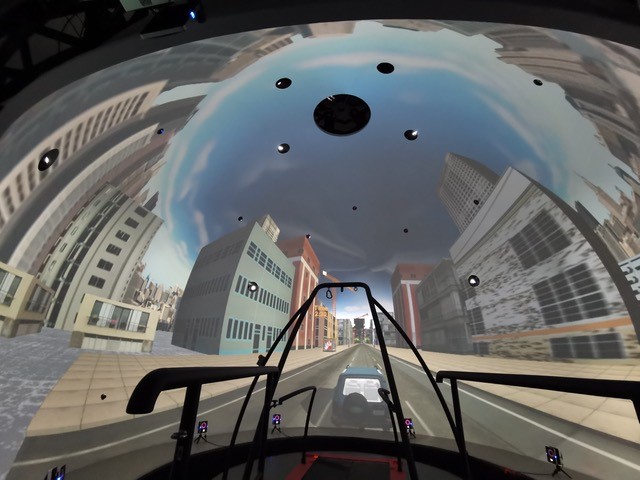Motek Medical, a division of DIH, develops rehabilitation equipment that patients experience in a virtual reality environment.
Based in The Netherlands, Motek Medical works closely with clinicians and therapists to create innovative devices — like the Computer Assisted Rehabilitation Environment (CAREN) system, designed to enhance clinical and research setups.
CAREN is a customer-assisted research environment that provides virtual simulations to help improve wounded war fighters’ physical and cognitive skills.
“Motek offers programs and protocols for individuals to rehabilitate in a broader sense,” said Dick van der Kolk, senior product specialist for Motek. “Additionally, we have a lot of universities working with our equipment to perform research and analysis of the patients throughout their rehabilitation.
“We have integrated Scalable Display Technologies’ solutions in numerous installations, but we have recognized particular success in working with military facilities using our most complex CAREN High-End system,” he said.
“CAREN is useful for various applications, including military rehabilitation. It has been integrated at locations throughout the United States, including San Diego, California; San Antonio, Texas; and Washington, D.C.,” said Van der Kolk.
“Our military clients have developed their own test protocols to enhance the rehabilitation of their patients and enable them to recover from critical traumas,” he said.
More About Motek Medical CAREN System
CAREN consists of a motion-capture system and a base driven by hydraulic or electromechanical actuators. The base where the users stand is retrofit with force plates and a treadmill. This allows the operator to generate visual and physical perturbation that require the user to make dynamic responses.
Real-time motion-tracking technology enables the system to follow patient movements, frame by frame, offering a detailed analysis.
“Our military clients have developed specific programs to simulate the environment as a remedy for the trauma these wounded warriors have experienced,” said Van der Kolk. “For example, the patients are wearing military gear and observing a combat environment.
Related: Military Veterans Have Plenty to Offer in AV Even Without Technical Training
“They’re using the simulation technology to react to certain circumstances,” he said. “In another application, the patients will experience sound at certain angles and will have to orient themselves in the specific direction of the sound.
“The operators are able to provide the patients a realistic scenario through video projection and a grid of speakers placed behind the projection screens. The facilities are utilizing this technology to train their patients suffering specific traumas and enable them to regain their day-to-day functionality again,” said Van de Kolk.
CAREN incorporates varying degrees of virtual-reality immersion, ranging from a flat-video, dual-channel audio to a surround dome enclosure.
“The design for the virtual-reality environment is either in a cylinder or a dome,” said Van der Kolk. “We integrated Scalable’s solutions because of the unique design of the environment. Scalable enables us to create seamless projection from multiple projectors on the unique surfaces.
“Each installation includes four to eight projectors, and to create the most realistic solution, we have to blend the projectors to create a harmonious transition from one projector to the next. It’s quite technical to accomplish seamless video projection,” he said.
Scalable’s software automatically warps and blends multiple projectors into one seamless display. It allows Motek Medical to streamline its installation and create a long-term solution.
“If a bulb needs to be changed in a projector, there’s a theoretical chance that the projector position will be moved,” said Van der Kolk. “Even if the projector is only adjusted one millimeter, it will dramatically affect the projection blending at three to seven meters. It could potentially cause a massive distortion in the video display.
“Our clients can easily recalibrate the system, because it’s designed with reference points. The system is quite stable and it’s rare to require a recalibration, but we appreciate knowing that the system is simple to adjust,” he said.










